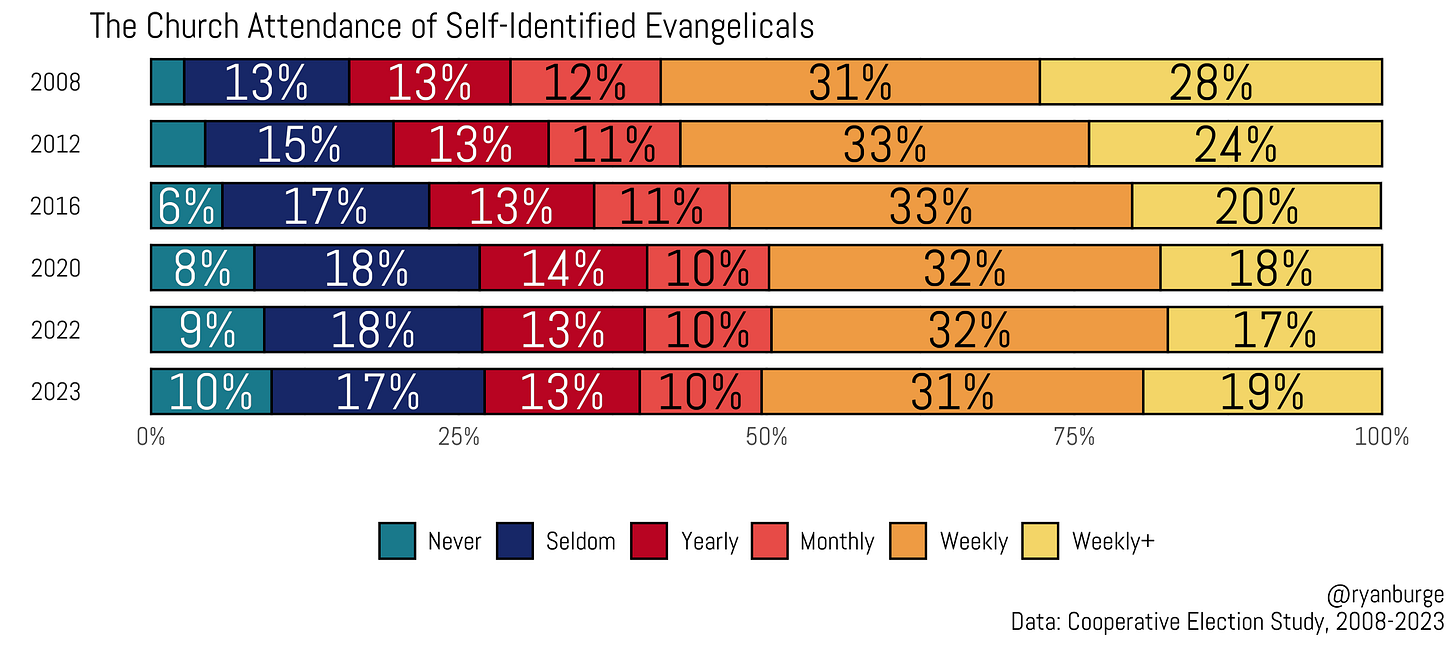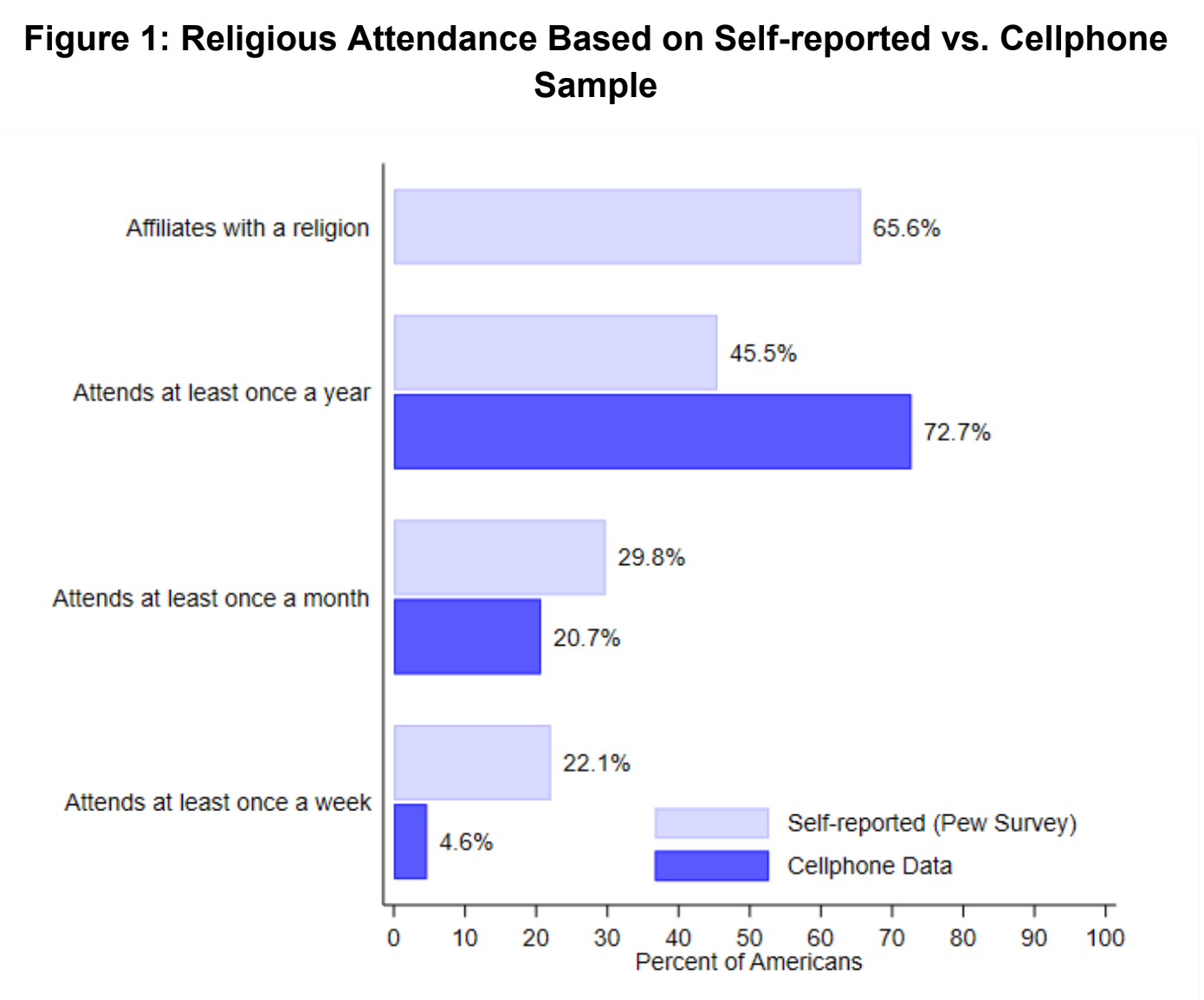Why Christianity in America is in Worse Shape Than You Think
The numbers are not what they seem
If you’ve read any article about the state of religion in America over the past decade, you’ve likely seen headlines announcing the decline of Christianity. Church attendance, church membership, and self-reported religious affiliation have all been steadily dropping.
That’s why I was surprised—and intrigued—to come across a recent article suggesting that the decline might be leveling off. You can read it for yourself, but the gist is this: after 15 years of consistent decline, the percentage of Americans who identify as Christian has held steady at around 61–63% for the past few years.
For any believer, that’s a hopeful sign. But for someone like me—whose vision is to see a disciple-making movement rise up in America to reverse our nation’s spiritual decay—it feels especially relevant.
Unfortunately, I also happen to love numbers and statistics and what not (I earned a mathematics degree in college), so I can’t ignore the other studies that tell a more sobering story. Beneath the surface, many trends are still headed in the wrong direction.
Christians Are Attending Church Less
Even though the percentage of self-identified Christians has stabilized, those same Christians are showing up to church less frequently.
Among self-professed Evangelicals, according to one study:
The percentage who say they attend church at least weekly dropped from 59% to 50% between 2008 and 2023.
The percentage who say they attend seldom or never rose from 16% to 27% over that same period.
So even if people still identify as Christians, local churches are losing active members—and many are closing their doors as a result. But wait there’s more…
Christians Say They Attend Church More Than They Actually Do
Here’s where it gets even more eye-opening.
Maybe American Christians are lying. Or maybe we’re just overly optimistic—or unaware. Whatever the reason, studies show a significant gap between what we say about church attendance and what we actually do.
One study tracked cellphone location data from 2.1 million Americans to determine how often people really attend religious services. The findings?
About 22% of Americans claim to attend religious services weekly.
In reality, only about 5% actually do.1
And even that 5% was generously defined: the study counted someone as a “weekly attender” if they showed up 75% of the time throughout the year.
Most studies from Barna, Pew, or Gallup rely on self-reported data—meaning people are asked how often they attend church, and they simply say what they think (or hope) is true. But given the huge gap between self-reported attendance and actual attendance (as shown by cell phone data), I’m beginning to wonder how much these surveys are unintentionally inflating the numbers.
We Need to Do Something Different
I started pursuing disciple-making movements in America because the believers in the Bible multiplied disciples and churches—and I just want to do what they did. Since then, I have been galvanized by these statistics to continue to pursue movements in America because I firmly believe that if we keep doing what we have been doing, we’ll keep getting what we’ve been getting.
Maybe if we go to people with the gospel instead of waiting for them to come to us…
Maybe if we disciple every believer to make disciples, instead of relying on a few professionals to do it for us…
Maybe if we empower the body of Christ instead of trying to control it…
Maybe then we’ll start to see something different.
Maybe it would look a lot more like the Book of Acts.
I want to believe that Christianity in America is stabilizing—maybe even growing. But I’ll believe it when I see it. Until then, I’ll keep pressing forward, pursuing a movement of everyday believers making disciples who make disciples, just like in the New Testament
Get The Book (Audiobook) | Pray | Donate
A few caveats to these stats are worth mentioning. First, the cell phone data only tracked Sunday worship at traditional houses of worship when measuring “attendance.” The study did offer a more generous definition—including other times and days of the week—and still found that only about 9% of Americans were weekly attenders which is still way below the self-reported statistics. It’s also worth noting that these numbers wouldn’t capture churches that meet in homes. But given how few house churches exist across America, I doubt they would shift the overall picture much.






